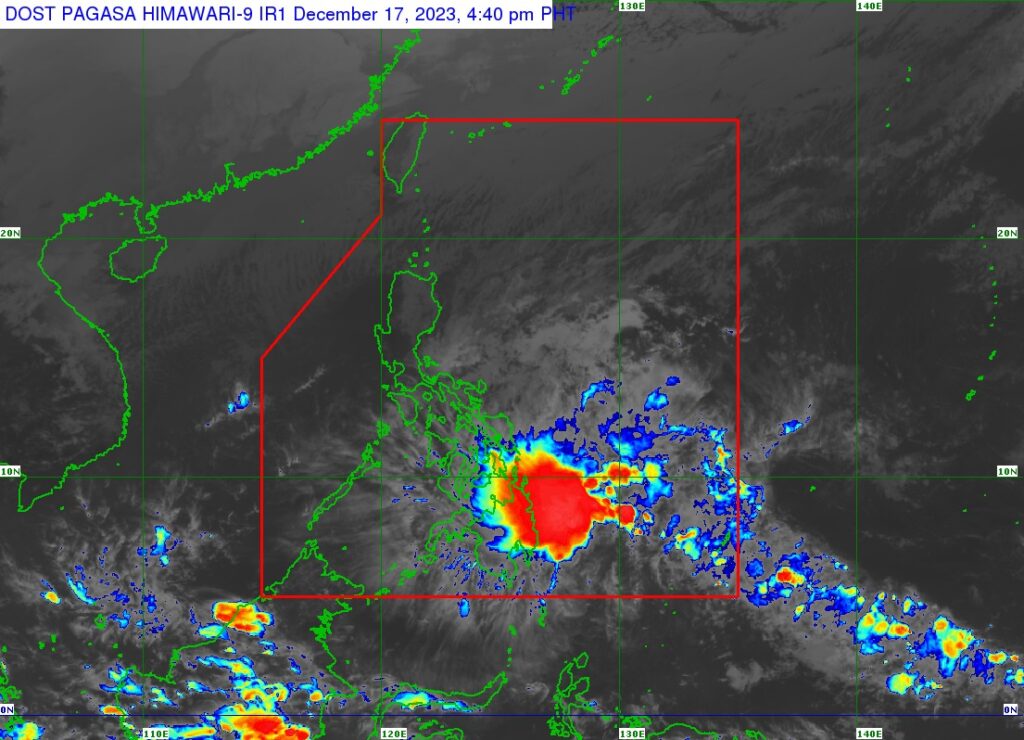
Satellite image of Tropical Depression Kabayan based on Pagasa’s 5 p.m. severe weather bulletin issued on December 17, 2023.
CEBU CITY, Philippines – Kabayan, formerly a tropical depression and a tropical storm at its peak, brought intense rains in Mindanao and portions of Visayas a few days before Christmas this year.
It was the 11th tropical cyclone to enter the Philippines in 2023.
Tropical cyclones are major weather disturbances and are considered one of the most destructive natural disasters. They can damage vital infrastructure, and billions of crops, displace thousands, and even kill lives.
The Philippines faces an average of 20 tropical cyclones annually, ranging from tropical depressions to typhoons.
It is important to know the different classification of tropical cyclone not only to determine its intensity but also to save lives.
The Philippine Atmospheric Geophysical and Astronomical Services Administration (Pagasa) usually measures the strength of a tropical cyclone through its wind speeds.
“The intensity of tropical cyclones varies, thus, we can classify them based upon their degree of intensity,” they said.
Tropical Depression
A low-pressure area or LPA is a sign that a possible tropical cyclone is brewing. If the LPA intensifies and reaches wind speeds of up to 62 kilometers per hour (kph) that can cause slight damage to houses that are made of light materials.
A tropical depression can also potentially uproot trees and cause significant damage to crops.
Tropical Storm
Tropical cyclones stronger than a tropical depression, but with wind speeds not going beyond 88 kph, are classified as tropical storms.
At this intensity, some old, galvanized iron roofing can be peeled off. The wind also can topple weak electric posts and signages or billboards.
Severe Tropical Storm
A tropical cyclone becomes a severe tropical storm once it has a maximum wind speed between 87 to 117 kph. A severe tropical storm can destroy poorly constructed houses and may cause power interruptions.
Typhoon
This is a more destructive tropical cyclone in which maximum wind speeds can reach 118 kph to 184 kph.
Typhoons can also bring heavy damage to vulnerable structures and even residential and commercial buildings. Power outages and interruptions in communication services are also expected during typhoons.
Super Typhoon
The most destructive tropical cyclone is the super typhoon, which has speeds of more than 185 kph and can cause widespread damage in terms of infrastructure, agriculture, and telecommunications, to name some.
While their intensities vary, a tropical cyclone’s potential to wreak havoc should never be underestimated. This is why authorities continue to remind the public to always take precautionary measures during bad weather.
RELATED STORIES
EXPLAINER: What do color-coded rainfall warnings mean?
Tropical Storm Kabayan: LIVE UPDATES
Kabayan displaces 7,000 residents in Mindanao